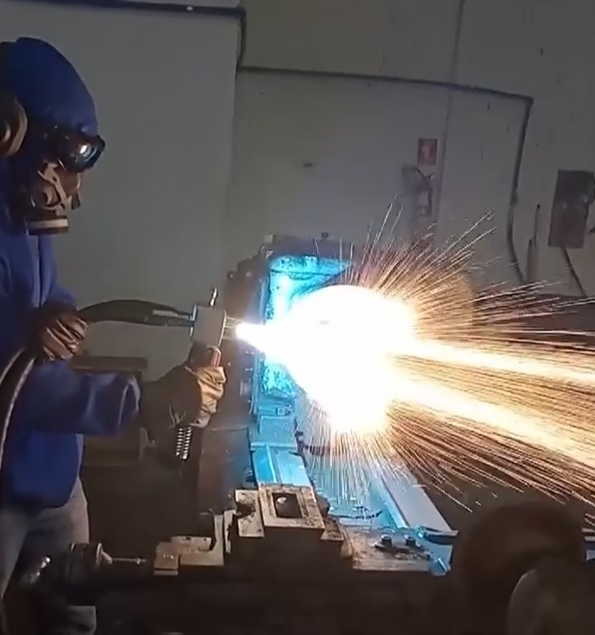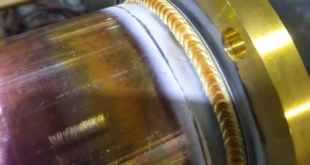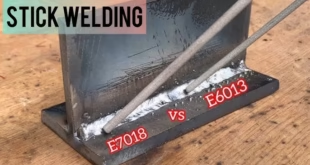What is Metallization: Process, Methods and Applications
Metallization is the process of coating or bonding a thin layer of metal onto the surface of a non-metallic or metallic substrate. The primary purpose is to enhance physical properties such as electrical conductivity, corrosion resistance, wear resistance, and aesthetics. Whether it’s for functional or decorative purposes, metallization plays a critical role in various sectors of modern industry.
Brief Historical Background and Evolution
The concept of metallization dates back to ancient times, when gold leaf was applied to artifacts and statues. However, with the rise of electronics and space technology in the 20th century, metallization evolved from being a purely ornamental technique to an essential part of manufacturing. Today, it’s an advanced engineering process enabling innovations in electronics, aerospace, and solar technologies.

The Science Behind Metallization
Physical and Chemical Principles
At its core, metallization involves surface science — the interaction between atoms of the metal and the surface substrate. Bonding can be achieved either through physical forces (like Van der Waals forces or mechanical anchoring) or chemical reactions that form a metallic bond between the substrate and coating.
Surface Preparation and Bonding Mechanisms
Before metal can be applied, the surface must be thoroughly cleaned, roughened, or activated to ensure proper adhesion. Methods like plasma cleaning, acid etching, and laser treatment are commonly used. The quality of this stage determines the success of the entire metallization process.
Classification of Metallization Processes
Physical Metallization Techniques
These involve the physical application or deposition of metal onto a substrate without involving chemical reactions.
Thermal Spray Metallization
This method uses a high-temperature flame or electric arc to spray molten or semi-molten metal onto the surface. It’s ideal for applying thick, wear-resistant coatings on machine parts and infrastructure.
Vacuum Metallization
This process involves vaporizing a metal in a vacuum chamber and allowing it to condense onto a cooler surface. Commonly used in packaging, automotive parts, and optical applications, it produces a shiny, reflective coating.
Sputtering and Evaporation Techniques
These are high-precision methods for thin-film deposition. Sputtering involves bombarding a metal target with high-energy particles, while evaporation heats the metal until it vaporizes. Both are key in semiconductor and microelectronics manufacturing.
Chemical Metallization Techniques
These methods rely on chemical reactions to deposit metals.
Electroplating
Electroplating uses electrical current to reduce dissolved metal cations onto a conductive surface. It’s widely used for coating tools, jewelry, and electronics.
Electroless Plating
Unlike electroplating, electroless plating does not require electricity. It uses a reducing agent in the solution to deposit metal on catalytic surfaces. It is popular for coating complex geometries.
Chemical Vapor Deposition (CVD)
CVD involves chemical reactions in the vapor phase to form a solid metal layer on a substrate. It’s used for producing high-purity, high-performance coatings in aerospace and electronics.
Step-by-Step Overview of the Metallization Process
Surface Cleaning and Activation
Contaminants like oils, oxides, and particles are removed using solvents, abrasives, or plasma treatment. For non-metals, surface activation using acids or catalysts ensures good adhesion.
Application of Metal Layer
The chosen metallization technique is applied — be it sputtering, electroplating, or spraying. Parameters like temperature, pressure, and time are carefully controlled for uniform coating.
Post-Treatment and Quality Inspection
After metallization, the part may undergo heat treatment, polishing, or protective topcoats. Quality checks like adhesion testing and thickness measurement ensure performance standards are met.
Materials Commonly Used in Metallization
Metals Used
Common metals include:
Aluminum – lightweight, reflective, and corrosion-resistant.
Copper – excellent electrical conductivity.
Nickel – strong, ductile, and corrosion-resistant.
Zinc – a protective barrier for rust prevention.
Silver and Gold – used in high-end electronics and optics for superior conductivity and reflectivity.
Base Substrates
Metallization can be performed on:
Plastics – used in automotive and electronics.
Ceramics and Glass – for insulation and optics.
Semiconductors – in integrated circuits.
Textiles and Paper – for decorative and packaging purposes.
Applications of Metallization Across Industries
Electronics and Semiconductor Industry
Metallization is crucial in forming conductive paths, contacts, and interconnects in microchips, PCBs, and LEDs. Thin metal films enable current flow and signal transmission.
Aerospace and Automotive Sectors
Thermal spray metallization improves wear resistance and corrosion protection on jet turbines, exhaust systems, and structural components. It also enhances reflectivity in lighting systems.
Energy and Solar Panel Technologies
In solar cells, metallized contacts enable electricity collection from photovoltaic layers. Metallization also protects components in wind turbines and batteries.
Packaging, Decorative, and Consumer Goods
Vacuum metallization gives a shiny, chrome-like appearance to plastic packaging, perfume bottles, and toys. It also adds a barrier layer for moisture and gas protection.
Advantages and Limitations of Metallization
Key Benefits
Enhanced Durability: Protects against corrosion and wear.
Improved Conductivity: Essential for electronics.
Aesthetic Appeal: Glossy, reflective finishes.
Functional Coatings: Magnetic, thermal, or EMI shielding.
Technical and Economic Limitations
High Initial Cost: Advanced techniques like CVD are expensive.
Complexity: Requires skilled operators and precise controls.
Environmental Concerns: Waste management and emissions must be addressed.
Quality Control and Testing in Metallization
Visual, Microscopic, and Adhesion Tests
Inspections detect cracks, peeling, or discoloration. SEM and X-ray analysis evaluate microstructure and adhesion levels.
Thickness and Uniformity Measurement
Techniques like XRF (X-ray fluorescence) and eddy current testing ensure coatings meet thickness specs and maintain uniformity.
Conclusion
Metallization is a cornerstone of modern engineering, bridging aesthetics with performance across nearly every major industry. Its ability to transform the surface of virtually any material with a functional or decorative metal coating makes it indispensable in today’s high-tech world. As technologies evolve and demand for advanced materials increases, metallization techniques will only become more refined, sustainable, and widespread.
 Welding of Welders All about Welding and Welders
Welding of Welders All about Welding and Welders



